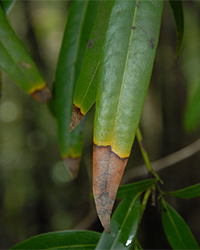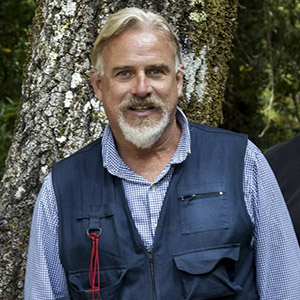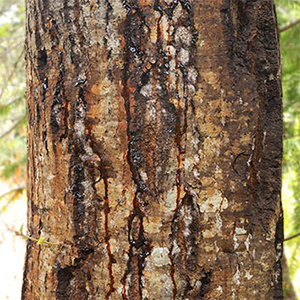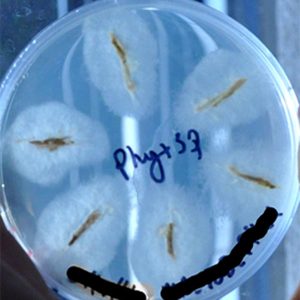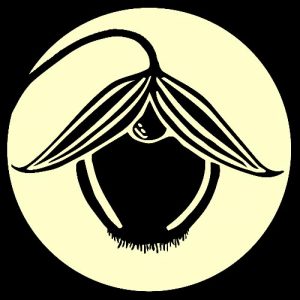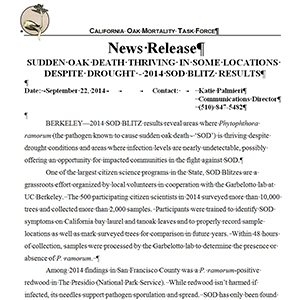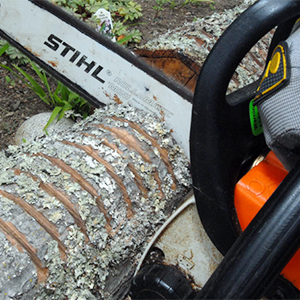Topic: 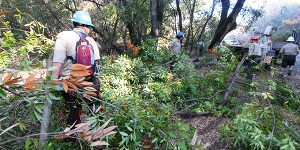
Selective removal and pruning of California bay laurel (Umbellularia californica) trees as a strategy to protect oaks and tanoaks from SOD infection.
Recommendation:
For oaks between 3″ (8cm) and 32″ (80cm) diameter at breast height (DBH), remove small and medium sized bay laurels for a distance of 30ft (10m) around the tree. If large bays are present it may be useful to prune large branches that fall within the 30ft (10m) buffer zone. For oaks larger then 32″ (80cm) DBH, increase the bay-free buffer zone to 50-65 ft (15-20m).
Bays are persistent landscape plants that re-sprout quickly and produce lateral tillers in abundance. As a result they are difficult to remove permanently. Useful techniques include adding a spreader to the herbicide or applying the herbicide with a “hack and squirt” technique (see links below). For best results, apply the herbicide when the tree is alive, wait approximately a month for the chemicals to be distributed throughout the tree, killing the roots, and then cut it down
Research behind the Recommendation:
Managing the presence of bays, the primary carrier of P. ramorum, around high-value oaks and tanoaks can reduce the number of infectious spores in the environment. However, bays are important species in their own right and care must be taken not to disrupt their role in the environment, particularly along streams where they are particularly important.
Links and References:
- Tree Herbicide Application Methods
- USDA Technical Report NRS-96
- Herbicide Application Techniques for Woody Plant
Control

